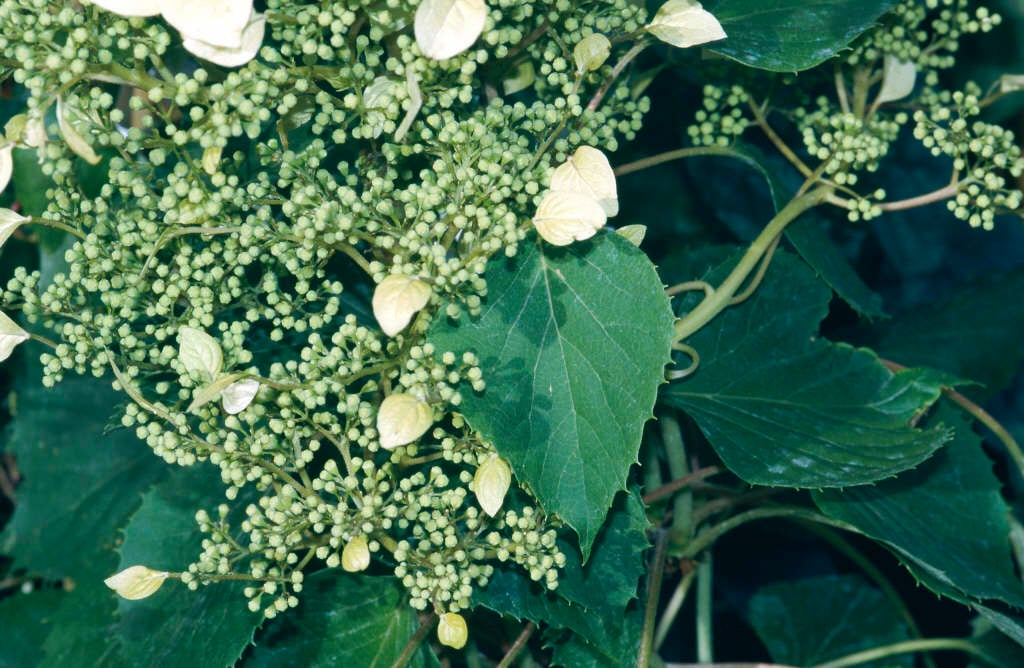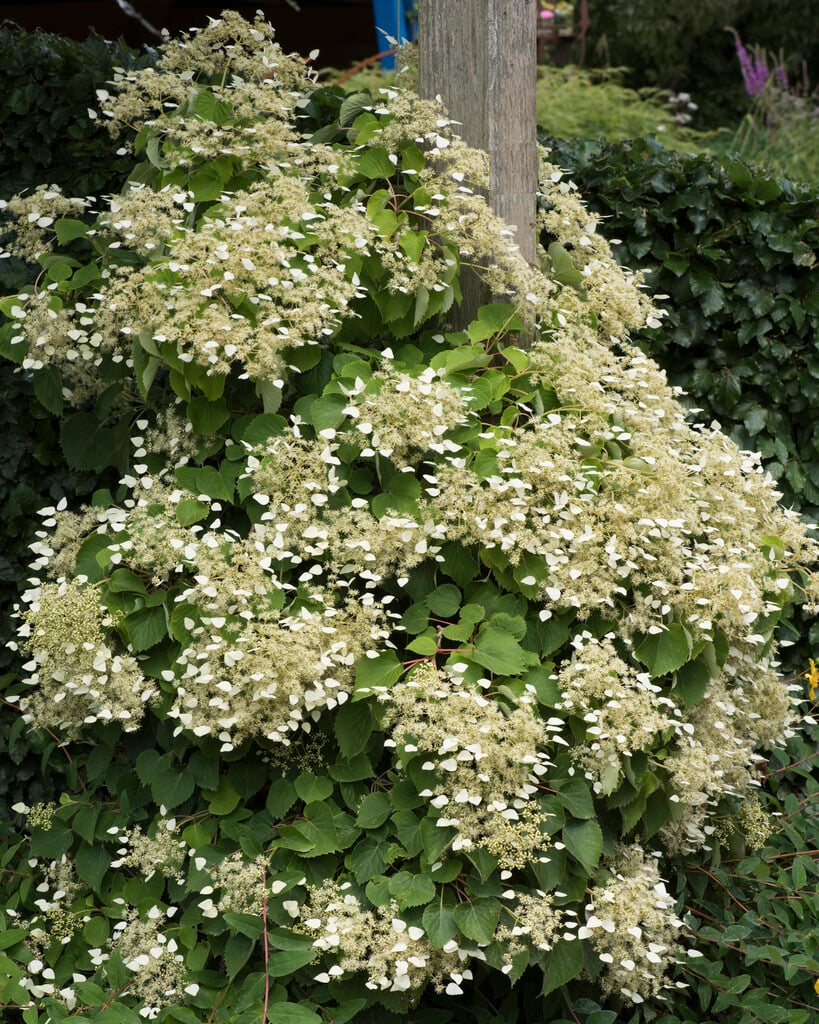Hydrangea hydrangeoides
Japanese hydrangea vine
A vigorous woody deciduous root climber to 12m, with broadly ovate leaves to 16cm long, and sprays of small creamy-white flowers with showy ovate white sterile florets 6cm long
Size
Ultimate height
8–12 metresTime to ultimate height
10–20 yearsUltimate spread
1–1.5 metresGrowing conditions
Moisture
Moist but well–drainedpH
Acid, Alkaline, NeutralColour & scent
| Stem | Flower | Foliage | Fruit | |
| Spring | Green | |||
|---|---|---|---|---|
| Summer | White | Green | ||
| Autumn | Green | |||
| Winter |
Position
- Full sun
- Partial shade
Aspect
North–facing or East–facing or South–facing or West–facing
Exposure
Exposed or Sheltered Hardiness
H5Botanical details
- Family
- Hydrangeaceae
- Native to GB / Ireland
- No
- Foliage
- Deciduous
- Habit
- Climbing
- Potentially harmful
- Skin allergen. Wear gloves and other protective equipment when handling. Pets (dogs, cats): Harmful if eaten. For further information and contact numbers regarding pets, see the HTA guide to potentially harmful plants
- Genus
Hydrangea can be deciduous or evergreen shrubs, or self-clinging climbers, with flowers in clusters usually comprising both small fertile and more showy sterile flowers; often good autumn colour
- Name status
Correct
- Plant range
- Japan
How to grow
Cultivation
Grow against a wall, fence or into a large tree. Self clinging, it will attach itself to surfaces by aerial roots. Though shade tolerant, it flowers best in a sunny situation. Plant 60cm (2ft) from support and tie in until established
Propagation
Take softwood cuttings in early to mid-summer or semi-ripe cuttings in late summer
Suggested planting locations and garden types
- City and courtyard gardens
- Coastal
- Cottage and informal garden
- Flower borders and beds
- Wall side borders
Pruning
pruning group 11 in spring
Pests
May be susceptible to aphids, capsid bug, hydrangea scale and vine weevil
Diseases
May be susceptible to a leaf spot, powdery mildews, grey moulds (Botrytis) and honey fungus (rarely)
Love gardening
Sign up to receive regular gardening tips, inspiration, offers and more
View our Privacy Policy
Get involved
The Royal Horticultural Society is the UK’s leading gardening charity. We aim to enrich everyone’s life through plants, and make the UK a greener and more beautiful place.

